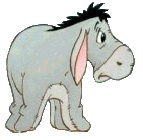
Originally Posted by
KristenA
Hi Mark!
Thank you for your quick response! Your help is greatly appreciated! (I can totally see applying this to so many other situations in my office). When I ran the macro, it gave me the error "Compile error: Variable not defined" and highlights shtTracker. I adjusted that line to read:
With ActiveWorkbook.Worksheets("Tracker")
The error went away and I received the message that the last column is 14, which is correct. I ran it on a test version of my real spreadsheet and received the correct column in the message.
I will try recording the macro and inserting the code into this and will write back with the results.
Thanks!
Kristen







 Reply With Quote
Reply With Quote




